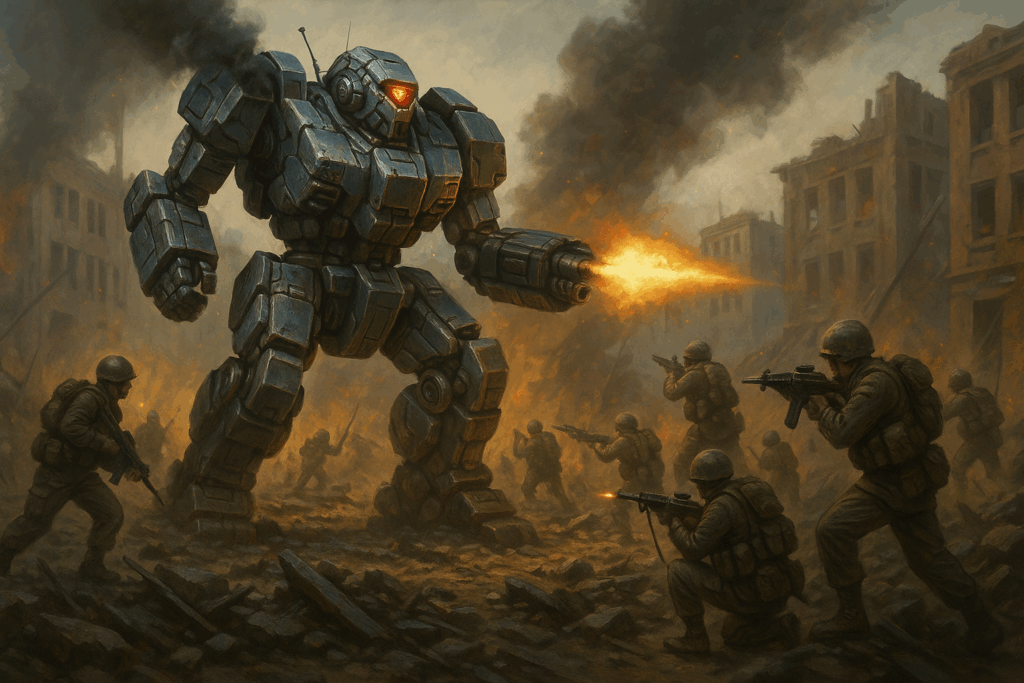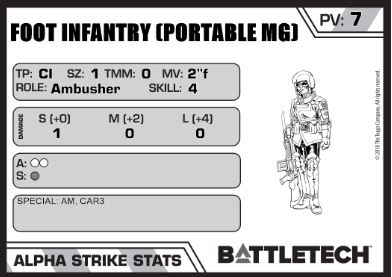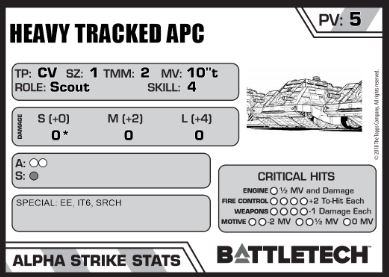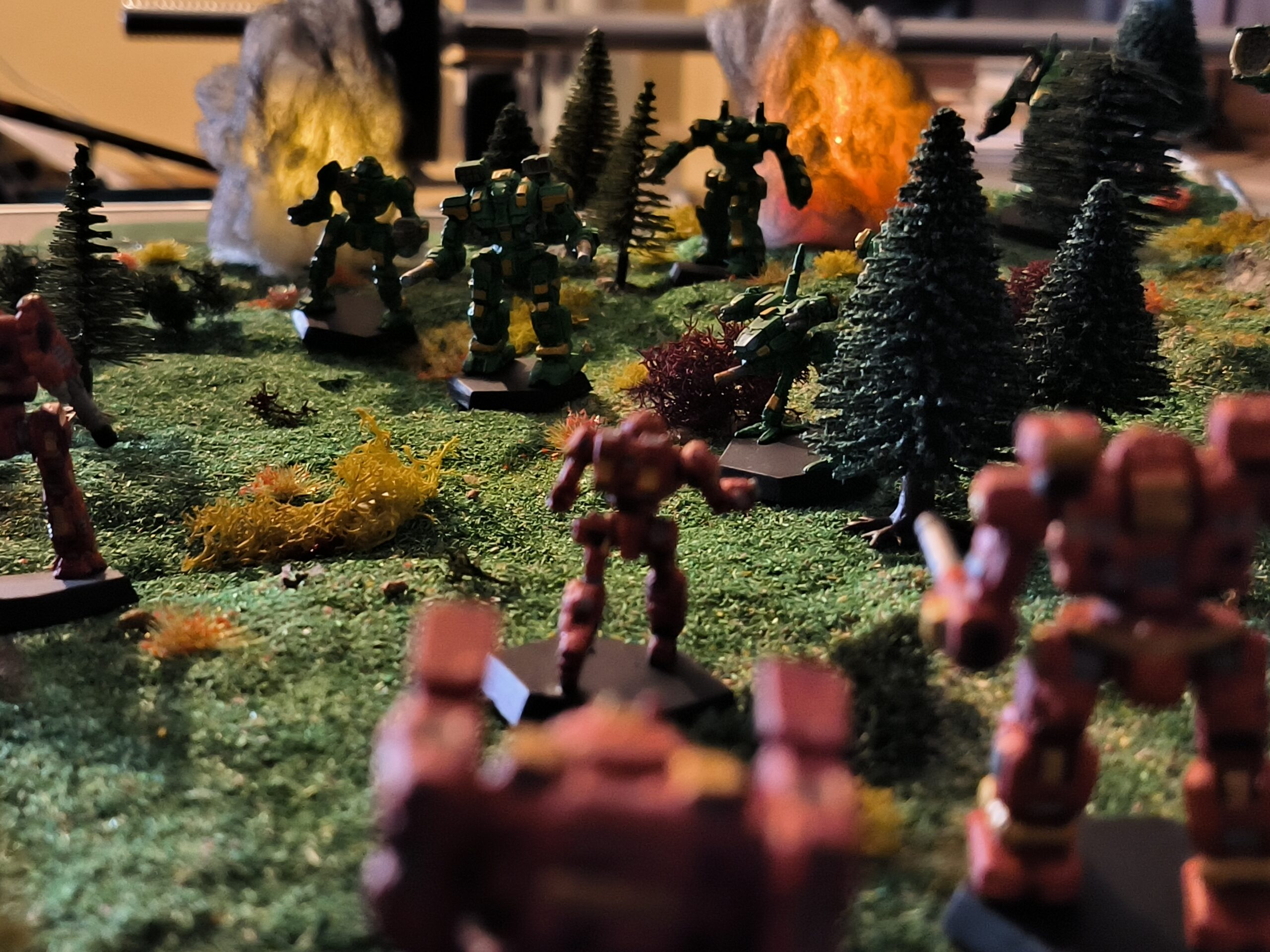Infantry in BattleTech Alpha Strike – Special features and areas of deployment
BattleMechs are at the heart of BattleTech Alpha Strike. But if you only rely on the battle machines that weigh tons, you are missing out on tactical opportunities. Infantry units are an often underestimated but extremely valuable addition. In this article, we take a closer look at the special features of infantry in Alpha Strike and the strategic roles they can play on the battlefield.

Why infantry?
Infantry is one thing above all: inexpensive. Compared to mechs and tanks, infantry units only take up a few points in the army list. This gives commanders the opportunity to cover important tactical tasks at low cost without breaking the budget.
Despite their weaknesses – especially their slow speed – they offer a flexibility that other unit types often cannot match. Used correctly, infantrymen can tip the scales in a battle.
The great weakness: movement
Infantry is slow, very slow (usually only two inches of movement). This makes them vulnerable and cumbersome on open battlefields. To play to their strengths, they usually need support units such as armored personnel carriers, VTOLs or other troop transports that can quickly bring them into key positions or reposition them flexibly.
A big bonus: Transport vehicles not only provide mobility, they can also provide additional fire support. Many of these units have their own weapons and can therefore support the infantry when advancing, holding targets or defending. This not only makes infantry operations more flexible, but also significantly more powerful.
Briefly explained: Rules for infantry transport in Alpha Strike
- Units with the Infantry Transport (IT#) special ability can transport infantry or battle armor units as long as the total capacity (indicated by the CAR# on the unit) does not exceed the IT number.
- Mounting a transport vehicle costs an infantry unit 2 inches of movement. Mounting must be done before the transport vehicle itself moves.
- Transport units capable of flying (e.g. VTOLs) must have landed in order to pick up infantry.
- After the transport vehicle has finished moving, transported units may dismount. Dismounting takes place directly in base contact with the transporter on permitted terrain.
- Important: Units that are mounted in the same turn may no longer be dismounted.
- After dismounting, the infantry units may still move up to half their MV (rounded down).
These rules are uncomplicated, but open up many tactical options, especially for quick advances on mission objectives or in house-to-house combat.
Which strategies suit infantry?
Infantry does not shine in every tactical alignment. It is particularly unsuitable for:
- Strategies that rely on rapid advances or long movements
- Brute breakthrough maneuvers where mobility and firepower are paramount
Infantry, on the other hand, shows its strengths:
- Attrition strategies that rely on indirect fire and positional play
- Fighting in urban or difficult terrain where speed is less important
- Defensive scenarios in which fixed defense points must be maintained
Spotter for indirect fire
One of my favorite uses for infantry is as indirect fire spotters.
Infantrymen can sneak into critical points relatively inexpensively and then provide target markers for artillery or other indirect fire units. Especially if artillery is part of your army list, infantry spotters are almost indispensable.

Infantry with anti-mech capabilities (AM)
Another tactical trump card: infantry with the special ability Anti-Mech (AM). These units are able to effectively threaten BattleMechs in direct contact.
As soon as such an infantry unit is in base contact with a mech and carries out a successful attack, there is always a chance of a critical hit, regardless of the remaining armor.
This is a huge advantage, especially in urban combat or in tight terrain situations, as even a single critical hit can have a massive impact on the outcome of a battle.
Secure mission objectives
Infantry is also excellent for holding mission objectives.
While your heavy units are fighting firefights or making advances, infantry squads can secure mission points inconspicuously and thus influence the victory point score without having to deploy expensive mechs.
Infobox: 3 quick tips for deploying infantry
1. don’t forget transportation:
Infantry needs support! Use transport vehicles or VTOLs to get them into key positions quickly – and don’t forget that they often bring additional firepower with them.
2. always prefer anti-mech:
Infantrymen with the AM special ability can make even heavily armored mechs dangerous in close combat – ideal for urban battles!
3. keep an eye on mission objectives:
Deploy infantry to hold or capture mission objectives while leaving your mechs free for movement and firepower.
Practical transporters for infantry
To bring infantry into battle effectively, you need vehicles with the special ability “Infantry Transport (IT#)”. Here are a few tried and tested examples:
- Heavy Hover APC (IT6 capability, e.g. transport of two units)
Fast hover tank, ideal for mobile infantry operations. - Armored Personnel Carrier (APC) – IT6 capability. e.g. transport of two units
Available in different variants (wheel, track, hover) – inexpensive, robust and versatile. - Maxim Heavy Hover Transport (IT3 capability. e.g. transport of one unit))
Provides space for mostly infantry units and can also provide decent fire support. - VTOL
An air transport vehicle for very fast repositioning – ideal for scenarios with a lot of terrain or mission target changes.



Tip:
If you are planning a strategy with a lot of infantry, it is worth planning several transporters – mobility is often the key to success!
Conclusion
Infantry is often underestimated in BattleTech Alpha Strike – wrongly so! Used correctly, they can make the difference between victory and defeat.
Whether as cheap spotters for indirect fire, as a threat to BattleMechs in close combat or as flexible units for holding mission objectives: Infantry offers tactical versatility that can be used cleverly.
It is important to compensate for their weaknesses – above all their low mobility – with suitable transport vehicles. These not only increase the mobility of the troops, but also support them with their own firepower.
Infantry unfolds its full potential especially in urban battles, defensive scenarios or grueling positional warfare. If you integrate them into your strategy in a targeted and well thought-out manner, you will gain decisive advantages on the battlefield.
“Use infantry wisely – and dominate the battlefield!”



